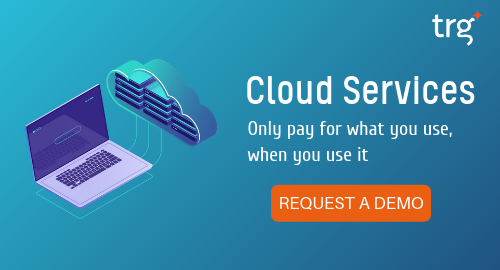Transitioning to the cloud has become more crucial today, especially for businesses looking to gain agility, scalability, and cost-effectiveness. Thus, companies need to choose the right cloud migration plan to guarantee a smooth transition and make the most of what the cloud has to offer.
This blog article examines the concept of cloud migration, explains alternative migration tactics, and investigates typical difficulties that emerge during the migration process.
Read more: Why CFOs Should be Looking to the Cloud
Content
Types of cloud migration strategies
- 1. Rehosting (Lift and Shift)
- 2. Replatforming
- 3. Repurchasing
- 4. Refactoring
- 5. Retiring
- 6. Retaining
Which strategy is right for your organisation?

Understanding cloud migration
The process of migrating an organisation's digital assets, applications, data, and infrastructure from on-premises or legacy systems to the cloud is known as cloud migration. Businesses may benefit from scalable resources, better flexibility, and enhanced cooperation by utilising the power of cloud computing, giving them a competitive edge in the market.
Read more: Cloud Adoption Strategy: Cloud-First vs. Cloud-Only
Important steps must be taken during the cloud migration to guarantee a smooth transfer. Firstly, thorough preparation is needed, including evaluating the present environment and choosing the most effective relocation method. Using an application performance management (APM) system and consulting a professional can offer real-time visibility and help create a thorough migration strategy.
The next important step is to choose the right cloud environment, whether it is public, private, hybrid, or multi-cloud, to meet the company's demands. Making sure there are safeguards for data backup, recovery, and security in the cloud is also essential. Finally, pre and post-migration application performance must be analysed to measure the migration’s success.
Read more: How Financial Data is Protected on Sunsystems Cloud
Types of cloud migration strategies
1. Rehosting (Lift and Shift)
Rehosting is the process of transferring existing infrastructure, databases, and applications from on-premises settings to the cloud without making any changes. This approach might be suitable for traditional/ risk-averse companies, businesses without long-term cloud strategies, or businesses looking for a rapid return on investment (ROI).
Organisations may quickly migrate to the cloud environment by lifting and relocating programs, databases, and infrastructure to the cloud without undergoing major adjustments. The approach may not enable organisations to experience the full advantages of the cloud, and there may be missed opportunities for optimisation.
Read more: More to Know about Lift and Shift (Rehosting) Cloud Migration Strategy
2. Replatforming
Replatforming, sometimes referred to as lift, tinker, and shift, involves moving the required infrastructure and application to the cloud while also introducing some minor optimisation to enhance the infrastructure/ application's efficiency, reduce costs, or take advantage of the cloud capabilities.
This strategy is suitable for businesses that want to preserve their foundational architecture while utilising the advantages provided by the cloud.
With the re-platforming approach, organisations may gain from greater performance, higher scalability, and improved resilience. Applications and infrastructure might need to be adjusted throughout the transfer process to better match cloud capabilities. However, further work is needed for optimisation, and some compatibility issues may need to be resolved.
3. Repurchasing
Repurchasing is also known as drop and shop. This strategy, in simple terms, involves dropping or replacing the business' applications with a different, newer version or product that ultimately provides users with more value than the legacy, on-premise solutions.
For instance, adopting a multi-tenant SaaS financial management solution to take advantage of its flexibility to access relevant insights on the go, only paying for what the users actually use as a subscription model, scaling upon demand, outsourcing maintenance and updates to vendors, and many more.
The new application should provide more business value than the existing, on-premises application, including features such as accessibility from anywhere, no infrastructure to maintain, and pay-as-you-go pricing models. Repurchasing the application typically reduces costs associated with maintenance, infrastructure, and licensing.
With this strategy, businesses may take advantage of the sophisticated capabilities of cloud-native alternatives while spending less on maintenance.
However, there is a learning curve for new systems, and data transfer issues might arise. Businesses must balance the advantages of improved functionality and cost-effectiveness with the requirement to train their personnel on the new platform.
Read more: How Infor SunSystems 6.4 Can Supercharge Your Digital Transformation
4. Refactoring
Refactoring, also known as rearchitecting, entails completely rewriting programs to take full advantage of the special features of the cloud environment. This approach enables businesses to fully utilise the cloud’s capabilities, such as serverless computing and auto-scaling, leading to future compatibility and scalability.
Refactoring, however, is a time-consuming and costly procedure. Because of the potential for disruptions, it calls for strategic planning and resource allocation throughout the application rebuild.
5. Retiring
Certain applications may no longer be useful or relevant when application portfolios are being evaluated for cloud readiness. In these situations, retiring these programs by deactivating them can save costs, which can then be used towards other cloud migration initiatives.
The retirement method enables enterprises to simply turn down programs when they are no longer necessary or relevant, saving money. Businesses may optimise their application portfolio and concentrate on more important assets by identifying and deactivating programs that do not support cloud readiness. Programs that are no longer required might be retired, which can significantly strengthen the business case for other apps that are prepared for relocation.
Read more: Cloud Adoption Strategy: Cloud-First vs. Cloud-Only
6. Retaining
Adoption of the cloud may not always be possible or viable for a company. Regulatory requirements, recent application improvements, or other priorities might cause the transfer to take longer. It is critical to assess the business case and revisit cloud computing later to make sure the migration is in line with the organisation's preparedness.
The maintaining method is workable for firms that are not yet prepared to deploy cloud computing because of compliance restrictions, recent application modifications, or other priorities.
Organisations can prioritise other initiatives and reduce migration risks by delaying migration and reconsidering cloud adoption afterwards. This strategy, meanwhile, can lead to missed opportunities and a delay in reaping the cloud's advantages. Evaluating the business case and choosing the best time to migrate to the cloud is crucial.
Read more: How to successfully adopt Accounts Payable automation
Which strategy is right for your organisation?
Selecting the optimal cloud migration plan is a crucial step in achieving a seamless transition to the cloud. The strategies discussed in this article each have their own advantages and considerations.
To fully leverage the benefits of cloud computing, organisations must align their decisions with their company objectives while understanding the pros and cons of each technique.
Determining the right cloud migration strategy requires careful evaluation of specific factors unique to each organisation. However, it is essential for companies to first have a deep understanding of their goals and objectives.
While digitally transforming your business processes through cloud solutions may not be the most suitable approach for you today, that does not mean it is completely ruled out for the future.
Undoubtedly, migrating to the cloud is a significant undertaking. Therefore, the process should be approached as a journey rather than a one-time project.
 English
English  Vietnamese
Vietnamese 



